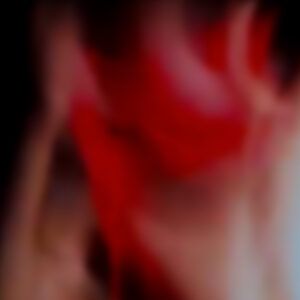On the occasion of this 12th edition, we’re devoting a major section of the festival to the life and works of José Val del Omar, who we have chosen to be our guiding light this year. Val del Omar was a filmmaker, a poet, an inventor, and a mystic who, since he started making films in the 1920s to his death in 1982, was a pioneer and avant-gardist artist. First, the twofold program Val del Omar. Cinema as an element will bring to our audiences his main work Tríptico elemental de España accompanied by a “mirror program” that will take us on a trip across the elements (earth, fire, and water) through a selection of films by well-established experimental filmmakers and young, emergent creators whose formal approaches are akin to Val del Omar’s. As a complement to this, we have organized the lecture Val del Omar. An aprojimación, which will bring together Piluca Baquero, director of the film archive Archivo Val del Omar; Gonzalo Sáenz de Buruaga, a lifelong collaborator of Val del Omar and preservationist of his works; and Víctor Berlín, who has devoted himself to studying the works of the Andalusian creator. Last, but not least, we’re offering an online program that delves into his PLAT (Picto-Luminous-Audio-Tactile) laboratory, where Val del Omar conducted a series of hallucinating experiments during the 60s. Down below, we share with you a modest selection of texts written by Val del Omar himself.
The Mechamystique of Cinema
by José Val del Omar
Cinema is, above all, a magic lantern. It is a magic lantern that, nowadays, tends to make use of electronics in order to broadcast itself.
A technician that lives on the magic of cinema needs to be aware of the importance of their role, they must be aware of their responsibility.
The technician brings to life and connects a great spectacle of conversion, of suggestion, charm, and conquest.
The freedom of the viewer can only be coerced when it is justified by a major poetic reason.
This great electronic mechamystique must bear fruit: convergence and understanding; empathy among humans.
The magical technology of cinema must be at the service of a mystic endeavor: that of loving our neighbor. Ideally, this magic should be the very crystallization of the substance-motif. Ideally, the cinematurgist (that is, the one who would be in charge of unifying the cinematic action) would be born a mechamystic poet.
The lack of a hierarchy in the ethical values is to blame for the current, almost physiological entertainment service, which is as filled with guilt as it is filled with reasons for perversion and scandal.
After a technical crystallization, justified by the usage of a new tool or by mere sensationalism, whose echoes are heard in the box offices, all can be concealed and the scandal justified.
All the films we make, we make them for those who follow us. Those who follow us are the second emotional generation of our own enjoyment.
Viewers of any age let us into the cradle of their dreams for us to lie down ours, to share our enjoyment with them, to sensitize their consciousness.
I denounce the classification of the audience in sections divided by age; it’s useless. To me, the audience as a whole is one big kid in love with the extraordinary.
When I look at what’s to come, 14 hours a day of an electronic magic lantern playing non-stop at our homes, I even dare to claim a technical code (crystallized from every point of view from every corner of the planet) of respect for the viewer. A code that would halt those products that –even if they present themselves adorned with countless emphatic resources– time after time, only dirty the virginal sensibility of children.
The new psychic techniques that are today invading the cinema-spectacle require a counter-comedy, a product control, a collective condensation of crime, a distinction between spectacle and scandal.
Scandal is the moral sin that lies ahead especially for those of us who devote ourselves to dreaming of spectacles.
One last thought: we shouldn’t be told that society defends itself with numbness in the face of the many hallucinating baits. Today, what humanity needs to realize is that we have lost our shell, our armor, our castles, our time, our distances. We’re in our raw skin, and very close to, almost merged into one social heartbeat.
This indispensable technique, which is fundamental, essential for cinema, we call (because it is mechanical and invisible) mecha-mystique.
Mecha-mystique at its purest state is the weapon and the formula that allows us to fight the little springs at the service of pecuniary interests. Believe me: everyone wants good food –our daily emotional bread to nourish us, lifting our spirits. Do you realize that we’re living, in the history of Humanity, the time of fantastic acceleration, of electronic automation, of the boom of human communication; the tremendous, dizzying notion of unity?
Text originally published in Cinestudio no. 1 in May 1961

Slit of Clairvoyance
Slit of clairvoyance
Visionary grace
Ozone of the uppermost solitude
Beginning and end presents with no sequence
No feet no floor
Syncopated scintillation
Floating plastic undulating
Magma of cosmic entrails that reunites
The light of impulses
The energetic optics
The sight of the love-cohesion.
No floor is found there; never is its clarity clarified.
I entered that which I didn’t know:
There’s no science beyond that of feeling the divine essence.
José Val del Omar






